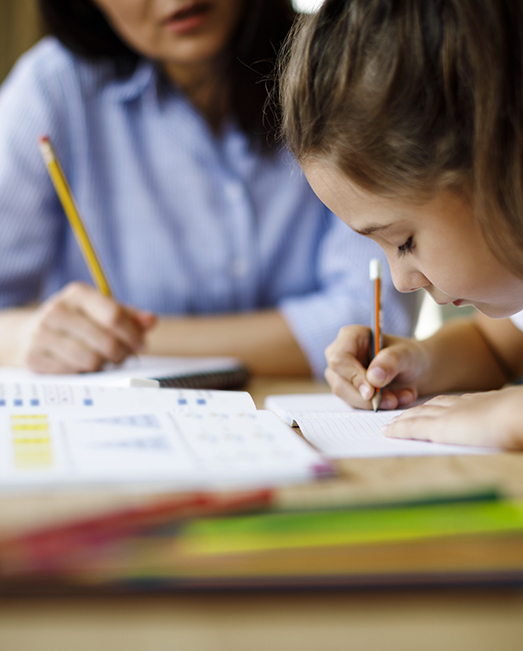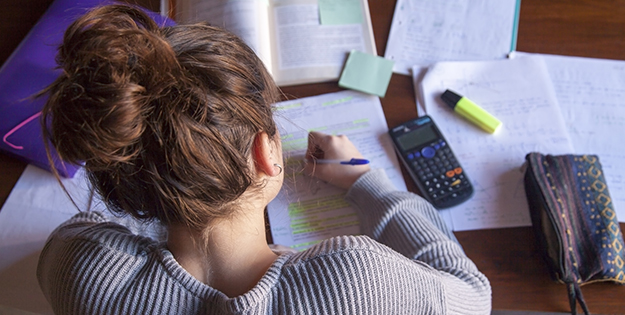Community
Copyright@ Australian Catholic University 1998-2025 | ABN 15 050 192 660 CRICOS registered provider: 00004G | PRV12008
Copyright@ Australian Catholic University 1998-2025 | ABN 15 050 192 660 CRICOS registered provider: 00004G | PRV12008

If there’s one message that’s come through loud and clear in the confusion surrounding the coronavirus, it’s that teachers deserve all the thanks they can get.
With schools closing and many parents forced to act as homebound educators, the tireless and complex work teachers do every day has been thrust into the spotlight.
“The teaching vocation has for years suffered from negative public and media image,” says ACU’s Associate Professor Miriam Tanti, who has two decades of experience as an educator and researcher.
“This crisis demonstrates how important teachers really are … and I want everyone to see the valuable role that educators play in child and teen development.”
But should parents tasked with engaging their kids in ‘home-learning’ attempt to mimic the role of professional educators? Should they be moving into teacher mode during this pandemic?
“Every family’s situation is different, but I think in most cases we can dismiss the idea of doing explicit teaching as it’s done in a formal learning environment,” says Chrissy Monteleone, a Lecturer in Curriculum and Teaching at ACU’s Faculty of Education and Arts.
“As parents, we shouldn’t expect to mirror what would happen in a classroom. Rather, we should ask ourselves: how can I work with my child? How can I find lessons in the things they’re doing and engaging in every day, the tasks that might help them to focus on a range of different learning areas?”
One of the first steps parents should take in setting up their home-learning environment is to find out what their children have been working on at school. This will make it easier to identify learning opportunities when they arise.
“For kids of primary school age, a lot of what they learn in class can actually be done in a real-life context,” Monteleone says.
A kindergarten measurement lesson could be replicated by setting the child the task of measuring how much water they drink each day, or using a DIY rain gauge to measure rainfall over the course of a week.
“In primary school, children write procedures as a text type, and the real-life application of that is to follow a recipe, or to put together a piece of furniture, or to fertilize the garden and work out the quantity of fertilizer and the ratio that’s required,” she adds.
“All of that happens at home incidentally … it’s real-life learning that encourages the type of critical thinking that we know will be valued in the future workforce.”
Finding these ‘incidental’ learning opportunities is more difficult with teenagers, as the content at high school is vastly more complex. It would be unrealistic, for example, to expect most parents to be familiar with advanced trigonometry.
Rather than playing the role of teacher, parents of adolescents might be better off using the opportunity to present an open disposition, and a willingness to learn.
“It’s great for teenagers to see that learning is lifelong – it never ends,” says Professor Tanti, the Acting Head of Education at ACU in NSW and Canberra.
“We also know that the best way to learn something is to teach others, so get your teenager to teach you a concept or take you through what they are learning. It’s a win-win.”
That’s not to say there won’t be opportunities to engage teenagers. “In English, all of the texts studied have connections between their themes and the world,” Tanti adds.
“You could ask them how they see the concepts in George Orwell’s 1984 or Shakespeare’s Macbeth resonating with what is happening in the world today, or you could use this opportunity to get them to teach you how to effectively search the Internet or use a software application.”
One of the hardest aspects to regulate during this period will be a child’s use of technology.
The establishment of clearly defined rules will help to ensure digital devices do not dominate their time, says Professor Tanti, whose research focuses on the impact of technological change on education.
“Children and teens are social beings, and they will need to interact with their peers, whether via social media, Skype or gaming, so you’ll need to provide them this opportunity,” she says.
“But be sure to set limits. With a smartphone, tablet, laptop and gaming device easily accessible during this period, the temptation to spend their days glued to some form of screen, mindlessly scrolling, viewing or gaming, is at an all-time high.”

It’s also important to encourage kids to use technology creatively.
If you have a daughter who’s really into skateboarding, you might suggest she uses a smartphone to make videos of the new tricks she’s learnt, which she can share with her friends in a WhatsApp group, or even on YouTube. Each week, she could pick a trick and run through the steps needed to learn it. She would post the video, and her friends would respond with feedback or their own videos.
“This one activity covers many key learning areas in the primary curriculum,” Monteleone says.
“The task has a Science component, physics and force. Planning and structuring a video is a storyboard activity and that relates to English. They will also verbally explain technical words to their audience and that is English also.
“The Mathematics could be the way the child is timing the video. Engaging in skateboarding covers physical activity. Music can also be considered here too, with the selection of appropriate background music for the audience. There might even be History if the child talks about the first skater to do that trick, and what country they came from and so on…”
This example shows that technology can be a positive learning tool — if it’s used in a creative and controlled way.
Meanwhile, high schools have learning management systems, where students can access unit content, resources and assessment information, enabling them to facilitate their own learning.
And primary schools are moving to online teaching, and encouraging the use of learning apps like Reading Eggs and Mathletics and websites like Cool Australia, which offer activities aligned to the curriculum.
Beyond technology, most kids will benefit from some form of structure and routine to keep them engaged and happy.
However, Tanti and Monteleone advise steering clear of ready-made schedules downloaded from a website, instead recommending a tailored plan that matches the child’s personality and interests.
“The key to scheduling and goal-setting is that it’s co-constructed, so it’s not a parent forcing the goals on the child or teenager, but it’s something that’s negotiated with their input,” Monteleone says.
Weekly and daily goals will allow children to visualise their days and weeks in advance, providing them with the motivation to turn these goals into a reality.
For younger children, weekly goals could be set with a simple sentence-starter: By the end of the week I will … read the first three chapters of a book, and draw a detailed bird’s eye view of our house.
For a teenager, a weekly goal might be: Finish writing my Macbeth essay or complete my design portfolio.
Daily goals might simply involve breaking up those larger tasks into smaller ones, which seem more achievable and can prevent the child or teenager from feeling overwhelmed.
“We know that when we are overwhelmed there is a danger of feeling like a failure before we have even commenced, and this can lead to excuses as to why we shouldn’t start the task at all,” Tanti says.
She suggests keeping the most challenging tasks to the morning, and for no longer than 20 or 30 minutes.
“Once they have commenced working, entering a state of flow will have them going beyond the 20-minute time period so they can complete the task, but this might not be the case for all teenagers and all subjects, so don’t be hard on your teen if they stop at 20 minutes.”
With both teens and younger kids, time should be allocated for meals and exercise, outdoors and quiet time, and connecting with friends and family.
“It’s important to have these routines and schedules in place, but they’re just there as a guide and there needs to be some fluidity and flexibility, especially with younger kids,” she says.
“Parents should know that it absolutely can and will be really messy at times, and that’s okay.”
If we’re looking for a silver lining to this situation, it might be that it will help parents to form a stronger relationship with their children, and to better understand and learn from each other.
“It’s an opportunity to make children see that learning is something that's embedded in our everyday practice, and it doesn't always have to be a 9am-to-3pm subject-specific approach,” Monteleone says.
“If the parent is working from home, the kids might really begin to understand the profession or the role the parent plays, and see that even adults are continuously learning. It’s an ongoing trajectory or pathway that all of us – children and adults – engage in.”
Parents should remember to reach out for help when the going gets tough.
“We have to remember that we all have our strengths and weaknesses, and that these are extraordinary times,” Monteleone says.
“Know that you’re not alone. Reach out to teachers, other parents, friends and family. Be kind to others and be kind to yourself.”
And most of all, try to view this extra time with your kids as a gift rather than an inconvenience.
“Go outside, go for a walk, enjoy the sunshine, laugh and play together – just be present in the moment and each other’s company,” Professor Tanti says.
“Show and tell them how much you love and care for them and enjoy the opportunity to reconnect with your child.”
As the Acting Head of ACU’s School of Education in NSW and the ACT, Associate Professor Miriam Tanti prepares pre-service teachers to teach in contemporary learning environments, through the meaningful integration of digital technologies.
Chrissy Monteleone is a Lecturer in Curriculum and Teaching at ACU’s Faculty of Education and Arts. Her teaching focuses on strategies to improve and create quality pedagogy in all learning areas, and her doctoral research area focuses on ways in which to identify high mathematical capability in early learners.
Interested in studying education? Explore our courses.
Copyright@ Australian Catholic University 1998-2025 | ABN 15 050 192 660 CRICOS registered provider: 00004G | PRV12008